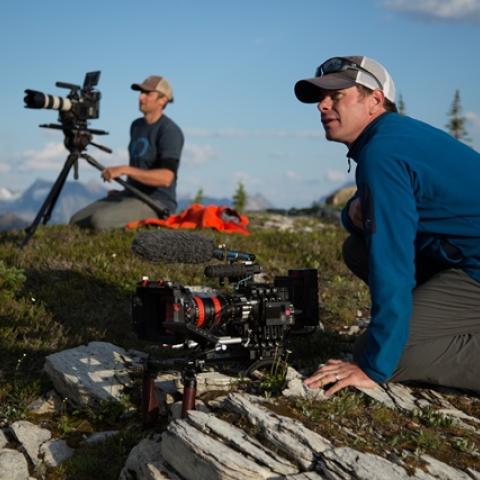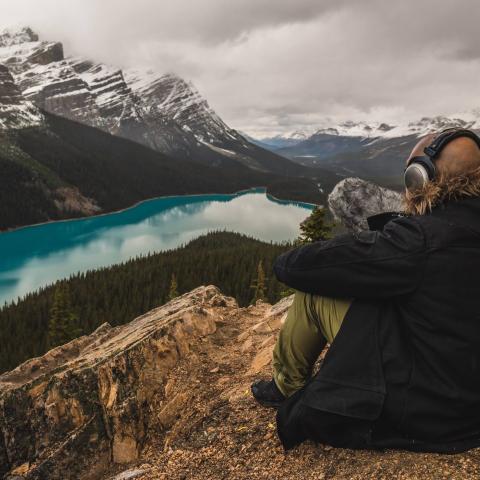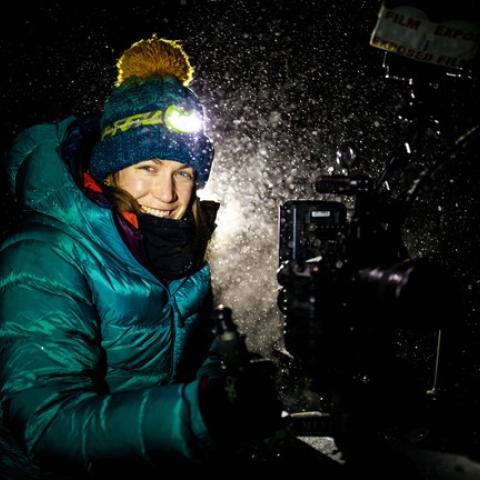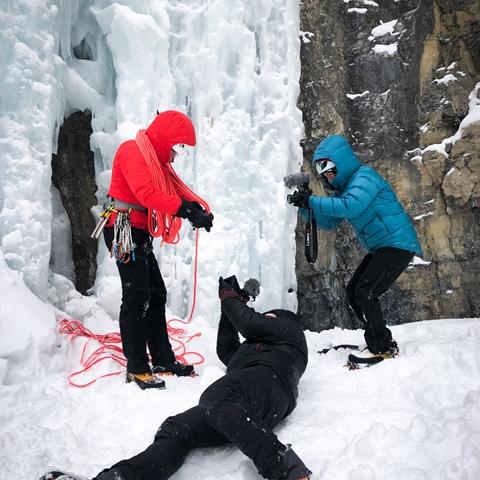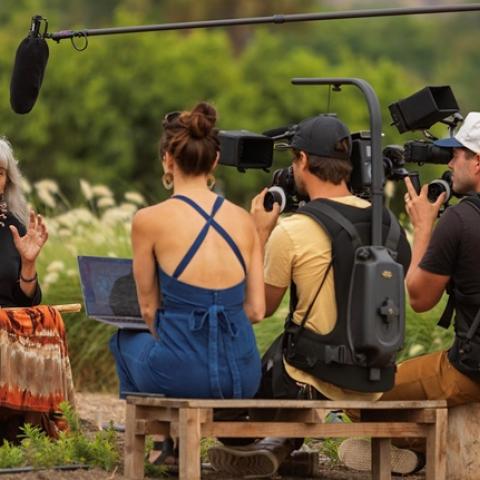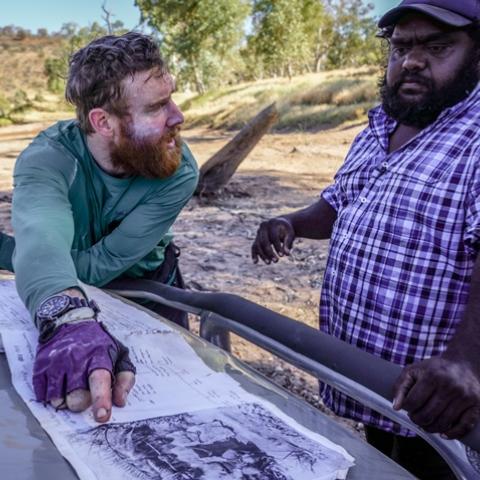
Image courtesy of Bryan Smith (Reel Water Productions)
Every year in Banff, talented filmmakers from across the globe showcase their films on our big screens during the Festival – a momentary glimpse of different lives and adventures as seen through their lenses. The connection between film and audience quite often inspires people to pick up a camera and capture their own adventures, so we asked some filmmakers for their top tips and tricks to help aspiring filmmakers.
Story is king
Bryan Smith of Reel Water Productions started his career as a professional kayaker and would bring a camera with him on all his trips. As a self-taught filmmaker, he learned the hard way that “story is king.” Before you start a new film project, Smith reminds us that you should always ask yourself these two questions: do you have a unique and interesting story? And if so, do you have unique and interesting characters that can articulate that story?
While technology plays an important role in capturing beautiful images, the story dictates everything. Make sure to draft your story ideas early on in the process and follow those classic rules of a plotline, Smith emphasizes. The top films will carry a narrative arc and bring your characters and film alive, so pick up a pencil and start jotting down story ideas.
Music as a narrative structure
Joaquin Gomez is a master of sound and has worked on music for films such as Wallmapu. When it comes to the music, Gomez emphasizes that the score should help the story, as it can be a crucial element that brings the spectator to the emotions and feelings that the director wants to represent. “It helps me before starting composing the music to understand the narrative structure, the emotional storyline, and create a map. Where should the music start/end on each section? Should the music be a continuous element that connects each section or should it cut and create spaces between parts?” He notes that if a filmmaker spends months/years on capturing a story and works hundreds or thousands of hours on the research, filming, and editing process, it makes sense to give the same amount of attention to the sound. “It's an audiovisual work, not just video. Sound should be treated with the same dedication and respect as the image.”
Record a pre-interview
Documentary films have many pieces that are always evolving and changing, but director of the popular film Ocean to Asgard, Heather Mosher, says that a great way to get started is by capturing a pre-interview. “Whenever you start working on a documentary film, do a pre-interview! As soon as you can, get your main subject explaining the bare bones of the story: who are they, what are they aiming to do, what are their hopes and dreams and fears for whatever the project is that they're about to embark on.” The key to this pre-interview is that you can pull out information from your subjects that can be used later on. Mosher notes that by doing a quick-and-dirty interview early on, even while the project is still just an idea, you may be shocked at how useful these early interviews can be later on in the edit, “Just make sure to get good, clean audio!” Mosher adds.
Rely on others and learn to collaborate
This tip can be easily forgotten and hard to do but is now essential for directors Jen Randall (Light Shed Pictures) and Dana Frankoff (Voice Above Water). “I took chances on people whose work I'd seen and thought was interesting. I brought them onboard my own projects in a bit of a leap of faith and to date, it has gone really well. Working with the right people makes the project feel serendipitous like it was meant to happen,” says Frankoff. Taking the step to reach out to new collaborators and sharing multiple perspectives can be one of the harder steps to making a great film, but can help push ideas further.
Frankoff has always been drawn to storytelling, and filmmaking seemed like the perfect medium to tell stories because it adds a visual, cinematic, and community experience. Her tip of relying on others was one that she found hard to learn. “I used to have a tendency to rely on myself too much and had a hard time letting go of a project. I've had trouble asking others for help but once I did, I found that you can create something so much bigger than yourself.”
Randall, the filmmaker of Home, follows with an emphasis on “Collaborate, collaborate, collaborate!” Finding the right people to share a project can be important on many levels, from helping push projects forward to learning how to network with other filmmakers. “When I started out there was a real badge of honor in doing everything yourself on a project, and that was a good way of working out my strengths and weaknesses, I came to understand that real, open-minded collaboration is the absolute best way to learn and grow and keep moving forward as a filmmaker… when you find the right people, it's just more darn fun.”
Shoot when you don’t want to
According to Beau Miles, filmmaker of Run the Line, the golden rule of good storytelling is to shoot when you don't want to. “If you ever have the sneaking suspicion you should've captured something, or shoved a camera in your own face, or someone else's, then chances are you were right and should have followed your instincts.” Miles is known for his films about appreciating the adventure in your everyday life and says that even when you convince yourself out of shooting and making content or that a better idea may come around that often isn’t true. “It is the incidental and the immediate that makes a film real for me, and true reality is harder to capture … films are only complete and contrastable when you show glimmers of beauty and dirt from the in-between.” Make sure to capture it all – the editing room is a good place to sort out what makes the cut and remember, “Have fun, your audience will appreciate it.”
Author: Kenna Ozbick
